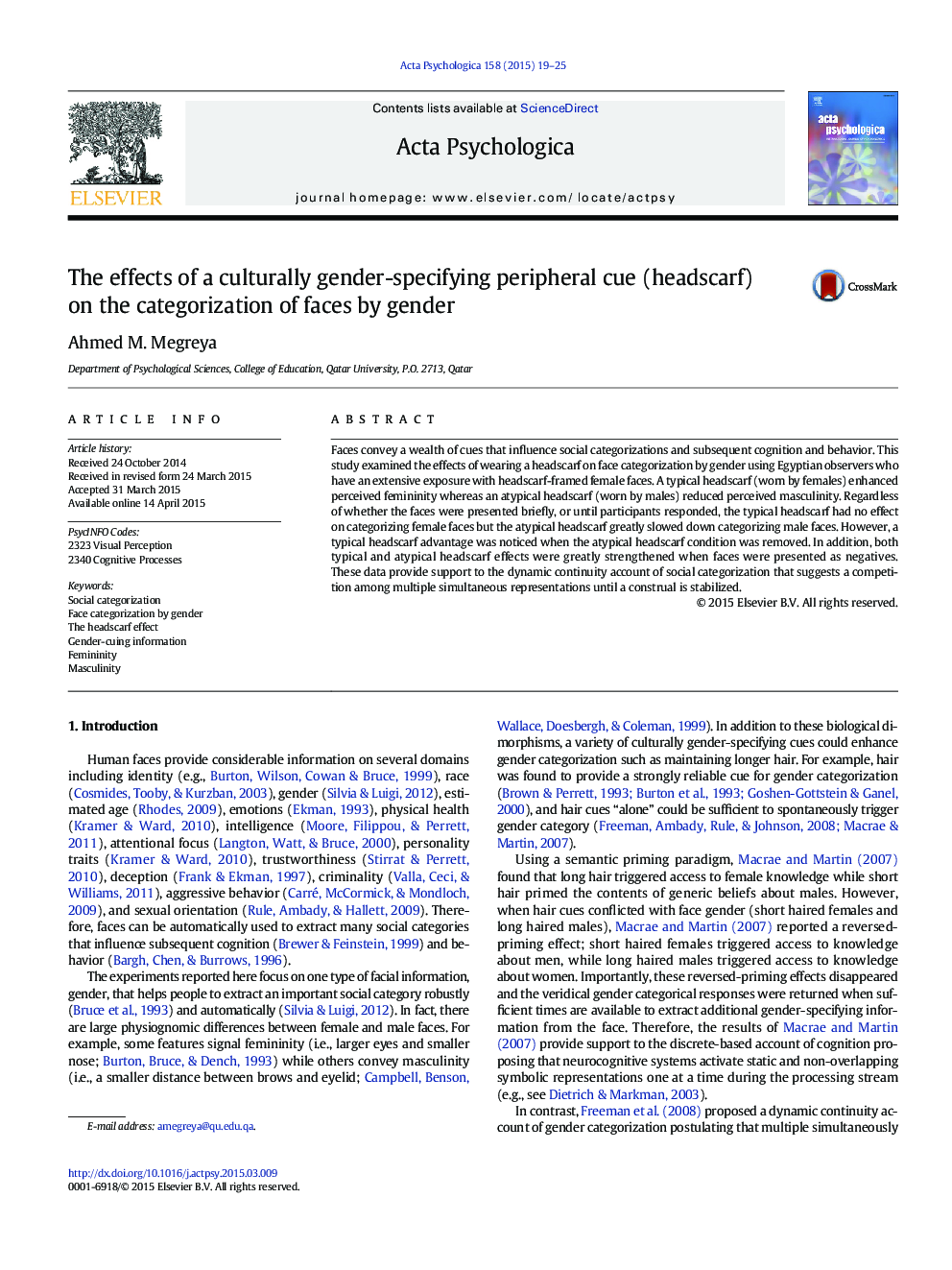| Article ID | Journal | Published Year | Pages | File Type |
|---|---|---|---|---|
| 919699 | Acta Psychologica | 2015 | 7 Pages |
•Wearing a headscarf enhanced perceived femininity on female faces and reduced perceived masculinity on male faces.•A headscarf had no effect on categorizing female faces but greatly impaired categorizing male faces.•When faces were presented negatives, the headscarf effects were greatly strengthened for both female and male faces.
Faces convey a wealth of cues that influence social categorizations and subsequent cognition and behavior. This study examined the effects of wearing a headscarf on face categorization by gender using Egyptian observers who have an extensive exposure with headscarf-framed female faces. A typical headscarf (worn by females) enhanced perceived femininity whereas an atypical headscarf (worn by males) reduced perceived masculinity. Regardless of whether the faces were presented briefly, or until participants responded, the typical headscarf had no effect on categorizing female faces but the atypical headscarf greatly slowed down categorizing male faces. However, a typical headscarf advantage was noticed when the atypical headscarf condition was removed. In addition, both typical and atypical headscarf effects were greatly strengthened when faces were presented as negatives. These data provide support to the dynamic continuity account of social categorization that suggests a competition among multiple simultaneous representations until a construal is stabilized.
